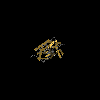?
 
Tumor necrosis factor receptor superfamily member 6B (TNFRSF6B), also known as decoy receptor 3 (DcR3) The subfamily TNFRSF6B is also known as decoy receptor 3 (DcR3), M68, or TR6. This protein is a soluble receptor without death domain and cytoplasmic domain, and secreted by cells. It acts as a decoy receptor that competes with death receptors for ligand binding. It is a pleiotropic immunomodulator and biomarker for inflammatory diseases, autoimmune diseases, and cancer. Over-expression of this gene has been noted in several cancers, including pancreatic carcinoma, and gastrointestinal tract tumors. It can neutralize the biological effects of three tumor necrosis factor superfamily (TNFSF) members: TNFSF6 (Fas ligand/FasL/CD95L) and TNFSF14 (LIGHT) which are both involved in apoptosis and inflammation, and TNFSF15 (TNF-like molecule 1A/TL1A), which is a T cell co-stimulator and involved in gut inflammation. DcR3 is a novel inflammatory marker; higher DcR3 levels strongly correlate with inflammation and independently predict cardiovascular and all-cause mortality in chronic kidney disease (CKD) patients on hemodialysis. Increased synovial inflammatory cells infiltration in rheumatoid arthritis and ankylosing spondylitis is also associated with the elevated DcR3 expression. In cartilaginous fish, mRNA expression of DcR3 in the thymus and leydig, which are the representative lymphoid tissues of elasmobranchs, suggests that DcR3 may act as a modulator in the immune system. Interestingly, in banded dogfish (Triakis scyllia), DcR3 mRNA is strongly expressed in the gill, compared with human expression in the normal lung; both are respiratory organs, suggesting potential relevance of DcR3 to respiratory function. |
